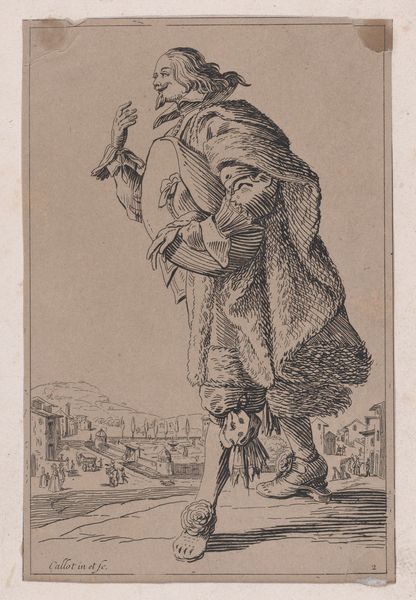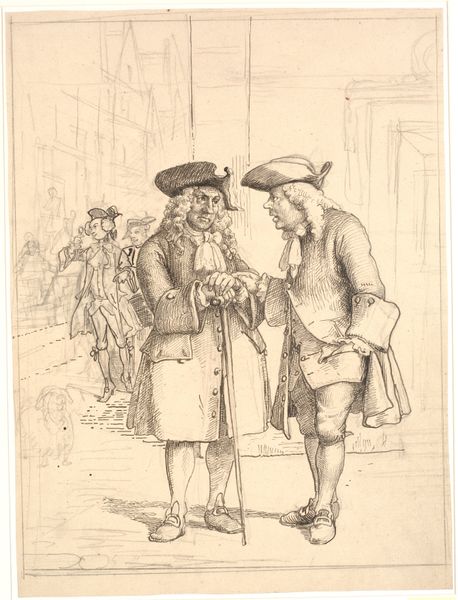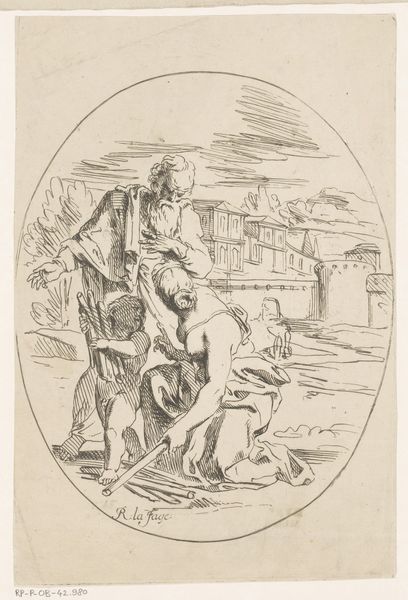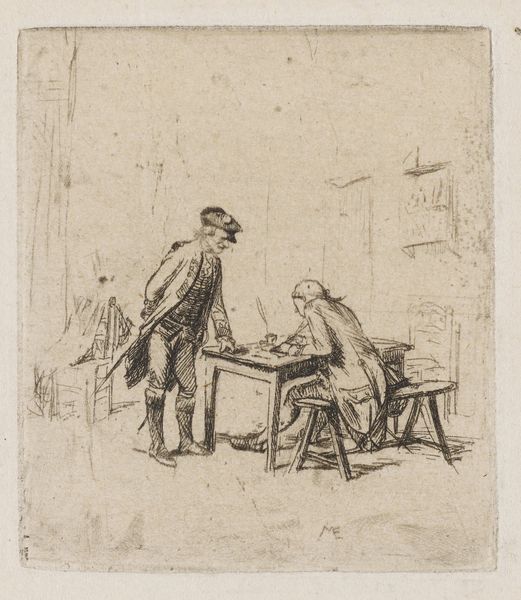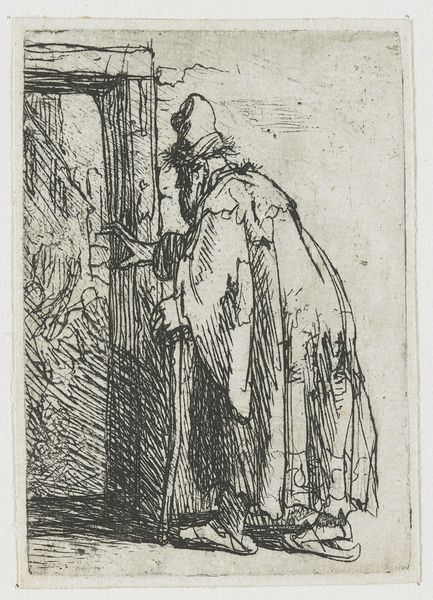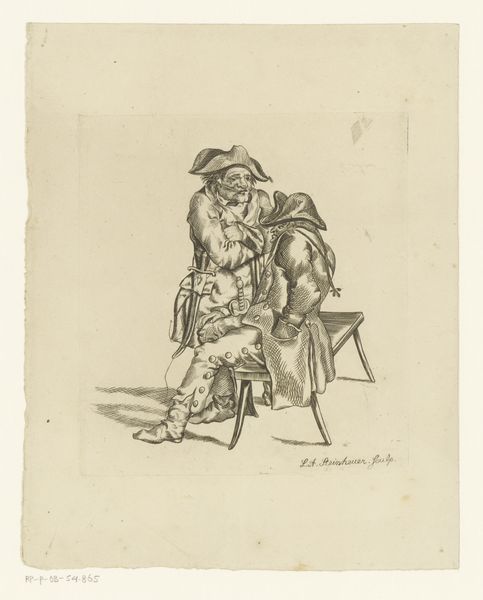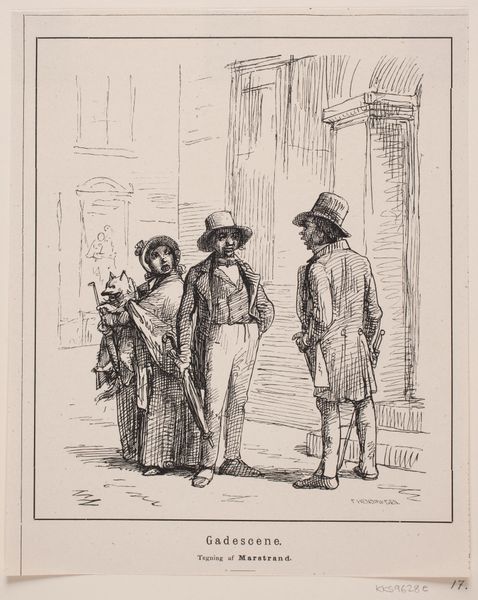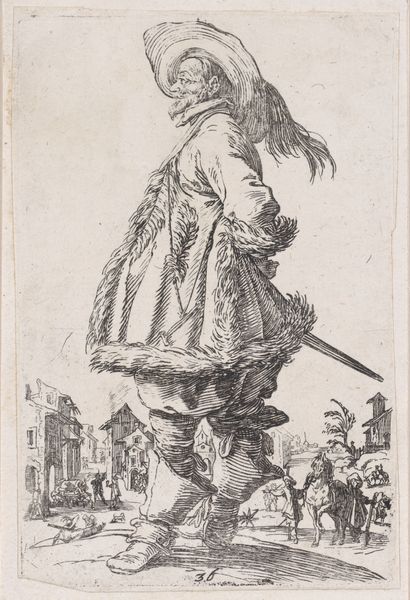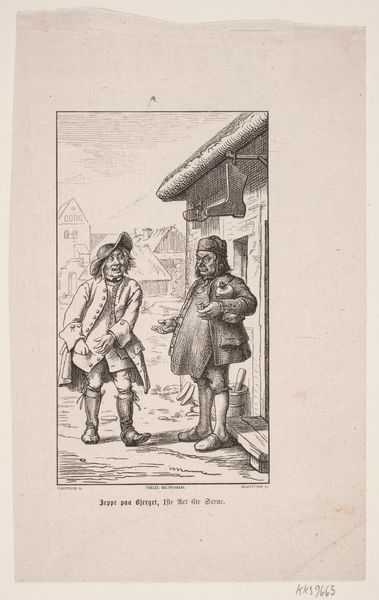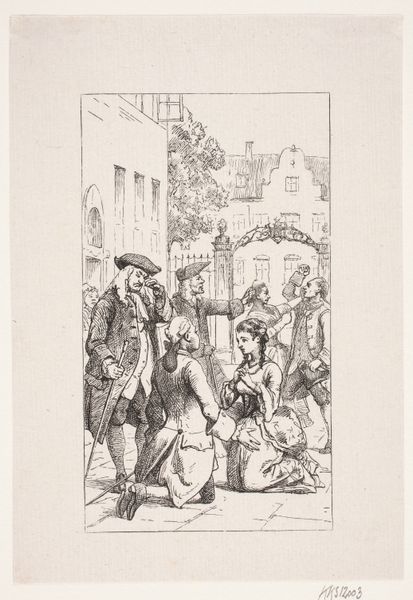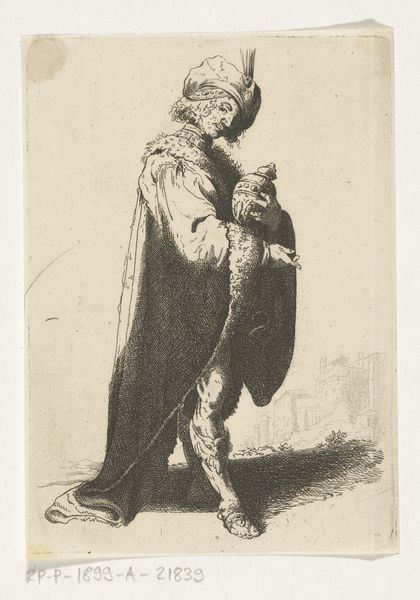
Dimensions: height 255 mm, width 210 mm
Copyright: Rijks Museum: Open Domain
Curator: Jacobus Ludovicus Cornet’s "Zwervend gezin op straat," which translates to "Wandering Family on the Street," drawn between 1825 and 1882, uses pen and ink to depict exactly what the title suggests: a family on hard times. Editor: The mood is undeniably bleak. The bowed heads, the evident poverty…it all conveys a strong sense of hardship. Curator: The method mirrors the subject; Cornet uses thin, scratchy lines to create texture and shadow, enhancing the worn appearance of the family's clothes and surroundings. Consider the physical act of repeatedly dragging a pen across paper—it's repetitive labor mirroring the family’s relentless struggle. The sketch is on display here at the Rijksmuseum. Editor: Yes, there’s a clear narrative here. The woman's head covering evokes mourning, perhaps signifying loss and displacement, with the father clinging to his son, protecting what little they have. What do you make of the discarded hat in the corner, seemingly sheltering a cat? Curator: That detail adds layers. Is it symbolic of abandoned dreams, a lost home? The presence of the cat offers both pathos and perhaps a flicker of hope—even in destitution, life finds a way to persevere. This work serves as an interesting record of societal challenges during that time. What narratives can be uncovered regarding access to affordable tools to create such stark social critique and disseminate awareness of impoverished families in the Netherlands during this period? Editor: From a purely visual point of view, notice the composition, particularly the contrast between the crisp lines describing the architecture in the background and the more fluid strokes detailing the figures themselves. It seems to juxtapose the permanence of the city with the precarity of the family's existence. Curator: Exactly! That contrast also hints at the social structures that perpetuate this cycle of poverty, these are the underlying narratives, if you consider that he had access to such costly art production. I am left questioning the degree of social mobility he actually was witness to or believed. Editor: This examination underscores the human ability to empathize with universal themes such as family, displacement, and perseverance and to draw a lasting, if somber, reminder of social inequalities. Curator: Indeed. Examining it through the lens of material reality brings forward intriguing possibilities to consider art and agency, as a way of asking social and material questions, a practice still evolving.
Comments
No comments
Be the first to comment and join the conversation on the ultimate creative platform.

